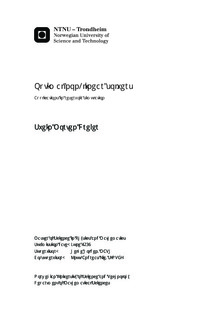| dc.description.abstract | This thesis starts by giving a general introduction to hydrocarbon reservoirs, before physical relations and mathematical tools used to model the flow of the fluid components in the porous media are presented. The resulting partial differential equations, the black oil equations, describes the dynamics of the hydrocarbon components. Mathematical tools used to solve the PDEs are introduced, in particular the sequential splitting method. This approach results in a set of pressure and saturation equations, to be solved in sequence at each time step of the simulation. The finite volume method (FVM) is presented and used for the discretization of the differential equations, giving a coupled system of non-linear equations. The reordering approach due to Lie et al. [2013] is also presented, which reduces the equations from the FVM to a sequence of non-linear single cell problems. These residual equations can be solved by one-dimensional root finding methods. The theoretical background follows the implementation found in the open source reservoir simulator toolbox provided by the Open Porous Media Initiative (OPM) [OPM, 2014].
The goal of this work is to investigate and implement optimal numerical root finders for solving the singe cell residuals. In particular, the well known general root finding methods due to Brent [1973], Ridders [1979], and the field specific trust region methods due to Jenny et al. [2009], and Wang and Tchelepi [2013] are introduced and tested against the reference Regula Falsi solver used in the OPM toolbox. Numerical tests show that our implementation of the trust region method by Jenny et al. [2009] outperforms the reference in terms of CPU time when running the test cases without gravity effects. Further, the tests show that the general methods, namely the Ridders and Brent methods, are less efficient than the reference solver. Finally, numerical evidence is presented indicating that the trust region approach can be improved by providing better initial guesses. | |

